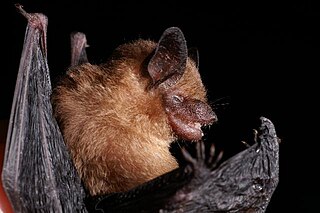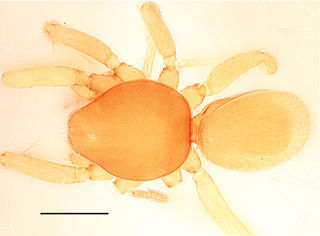
The Planctomycetota are a phylum of widely distributed bacteria, occurring in both aquatic and terrestrial habitats. They play a considerable role in global carbon and nitrogen cycles, with many species of this phylum capable of anaerobic ammonium oxidation, also known as anammox. Many Planctomycetota occur in relatively high abundance as biofilms, often associating with other organisms such as macroalgae and marine sponges.

Barygenys is a genus of microhylid frogs. They are endemic to New Guinea and the adjacent Louisiade Archipelago. So far only known from Papua New Guinea, the range of the genus is expected to reach Papua province in the Indonesian part of New Guinea. Despite not being known from Papua, common name Papua frogs has been suggested for them.

The common dwarf mongoose is a mongoose species native to Angola, northern Namibia, KwaZulu-Natal in South Africa, Zambia and East Africa. It is part of the genus Helogale, along with the Ethiopian dwarf mongoose.

The little yellow bat is a species of vesper bat found only in Mexico.

Rhyncholepis was an extinct genus of anaspida from the Late Silurian. Fossils of species R. butriangula and R. parvula have been found in Ringerike, Norway, and Oesel, Estonia. The genus has two species, described in 1911 and 2002.

Rhogeessa is a genus of bats within the vesper bats family, Vespertilionidae.

Veillonella parvula is a strictly anaerobic, Gram-negative, coccus-shaped bacterium in the genus Veillonella. It is a normal part of the oral flora but can be associated with diseases such as periodontitis and dental caries as well as various systemic infections, including meningitis and osteomyelitis. It has also been isolated from women with bacterial vaginosis and has been associated with hypertension together with Campylobacter rectus and Prevotella melaninogenica.
SILVA is a ribosomal RNA database established in collaboration between the Microbial Genomics Group at the Max Planck Institute for Marine Microbiology in Bremen, Germany, the Department of Microbiology at the Technical University Munich, and Ribocon.

Bannana is a genus of goblin spiders native to Xishuangbanna prefecture, Yunnan Province, China, where it lives in the leaf-litter of tropical rainforest. There are two known species: Bannana crassispina and B. parvula, both described in 2015. Individuals are pale yellow and unpatterned, and range from around 1.0 to 1.8 mm in body length, with females being slightly larger than males. The eyes are reduced or entirely absent. Known only from a nature reserve in Xishuangbanna, Bannana belongs to a group of Asian goblin spiders known as the "Dysderoides complex", that ranges from China to Pakistan and south to Indonesia.

Pachycondyla parvula is an extinct species of ant in the formicid subfamily Ponerinae described by from a fossil found in Europe. P. parvula is one of six Lutetian Pachycondyla species.
Nepenthes parvula is a tropical pitcher plant native to the Cape York Peninsula of Queensland, Australia.
Phlegra parvula is a jumping spider species in the genus Phlegra that lives in Tanzania. The female was first described in 2000.

Zaitzevia parvula is a species of riffle beetle in the family Elmidae. It is found in North America.
Darevskia parvula, the red-bellied lizard, is a lizard species in the genus Darevskia. It is found in Georgia and Turkey.
Zaitzevia thermae, also called the warm springs zaitzevian riffle beetle, is a flightless, wingless small beetle found in aquatic habitats in Montana.
Rhogeessa velilla, also called the Ecuadorian little yellow bat, is a species of vesper bat in the genus Rhogeessa. It is found in Northwestern Peru and parts of Ecuador. The species was previously included in R. io, but is now recognized as a separate species. Very little is known about this species, though it is generally considered to be insectivorous.

Pseudovates is a genus of praying mantis in the family Mantidae. There are more than 20 described species in the genus Pseudovates, and are found in North, Central, and South America.
Lacipirellulaceae is a family of bacteria.
Lacunisphaera is a Gram-negative, aerobic and motile genus of bacteria from the family of Opitutaceae.
Adhaeretor is a genus of bacteria from the family of Lacipirellulaceae with one known species, Adhaeretor mobilis.










